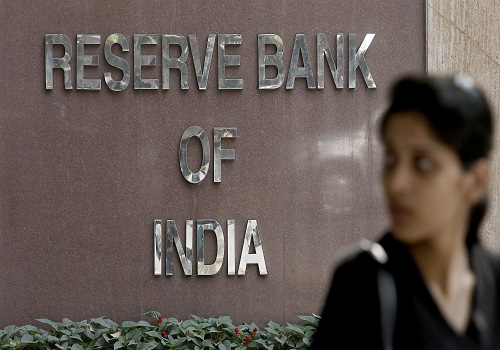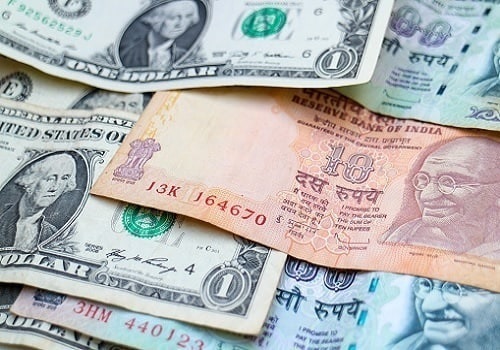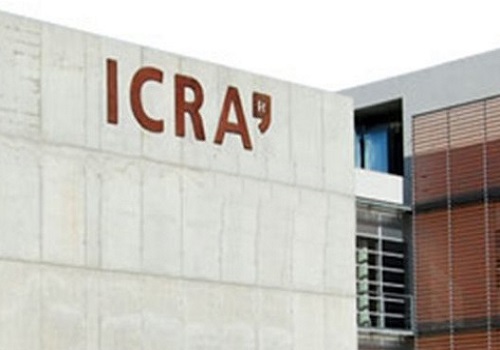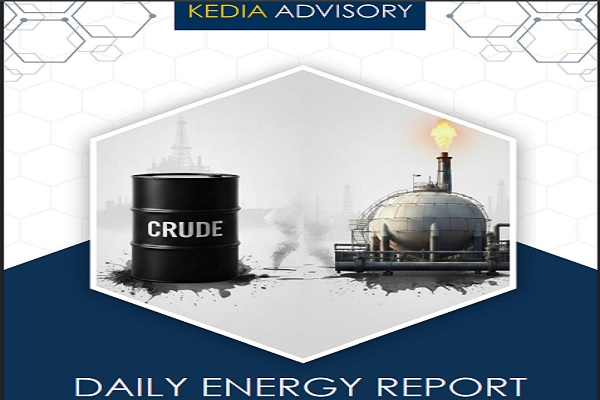Perspective on Indian Rupee, U.S. dollar, EUR/USD, British Pound, Gold, Silver, Copper, Crude oil and Natural Gas by Ms. Riya Singh, Emkay Global Financial Services

Below the Perspective on Indian Rupee, U.S. dollar, EUR/USD, British Pound, Gold, Silver, Copper, Crude oil and Natural Gas by Ms. Riya Singh – Research Analyst, Commodities and Currency , Emkay Global Financial Services
The Indian Rupee continues to trade under a cloud of cautious sentiment, navigating a complex macroeconomic landscape marked by global uncertainty, domestic monetary policy signals, and geopolitical developments. Last week, the rupee closed at 86.5150 per dollar, posting a weekly loss of 0.4% amid persistent foreign portfolio outflows and a lack of clarity around a US-India trade agreement ahead of the August 1 tariff deadline. Although a partial trade resolution between the US and EU offered global relief, India's negotiations remain inconclusive, keeping the rupee on a slightly bearish bias. That said, near-term downside appears limited as traders expect the rupee to hover in a narrow 86.30–87.00 range. On the monetary policy front, all eyes are on the US Federal Reserve’s upcoming decision and commentary from Chair Powell, especially after robust US labor market data pushed the unemployment rate down to 4.1%, diminishing the likelihood of a near-term rate cut. Domestically, hopes for another RBI rate cut are gaining momentum following a sharp decline in retail inflation to a six-year low in June, with further moderation expected in July. RBI’s recent 50 bps rate cut and shift to a neutral stance has already stoked speculation of a continuing easing cycle, although Governor Malhotra remains firmly focused on long-term price stability. Supporting the rupee’s structural backdrop, India’s macro fundamentals remain stable—fiscal health is intact, inflation is under control, and foreign reserves, despite a recent $1.18 billion dip, remain robust at $695.49 billion. Furthermore, the recent announcement of India’s first rupee-denominated line of credit to the Maldives and progress on bilateral trade and connectivity initiatives highlight New Delhi’s growing regional economic influence. The central bank’s efforts to balance growth, inflation, and financial stability add another layer of resilience to the rupee’s medium-term outlook. While global risk factors and dollar strength may cause short-term volatility, the rupee is expected to remain broadly range-bound with support from solid fundamentals and improving regional diplomacy.
The U.S. dollar enters the week facing a complex macroeconomic landscape, balancing political pressure, trade policy uncertainty, and diverging global monetary trajectories. While the Bloomberg Dollar Spot Index gained 0.3% intraday on Friday, it still closed the week down 0.6%, breaking a two-week rally and reflecting growing anticipation of Federal Reserve rate cuts later this year. The upcoming FOMC meeting on July 30-31 is expected to hold rates steady, but all eyes will be on Powell’s guidance amidst increasing signs of economic deceleration and a moderating labor market. The U.S. economy likely rebounded in Q2, with GDP projected to rise at an annualized 2.4%, driven by a narrowing trade deficit, but consumer demand remains tepid, the median forecast for consumer spending shows just a 1.5% gain, the weakest back-to-back quarters since early 2020. Labor market data is equally mixed, with July's jobs report expected to show private payrolls rising by only 100,000 and the unemployment rate ticking up to 4.2%, adding weight to dovish expectations. Despite President Trump’s rhetorical support for a strong dollar, his simultaneous endorsement of its manufacturing advantages undercuts confidence in a sustained dollar rally, especially as political friction with the Fed resurfaces. With nearly 44 bps of rate cuts priced in for the rest of 2025, the first fully priced in by October, markets are already discounting Fed inaction this week as transitory. Meanwhile, a strengthening euro, backed by the ECB's pause in its rate-cut cycle, has pushed EUR/USD higher, compounding downward pressure on the greenback. Dollar shorts are still elevated, with speculative net positions amounting to $14.3 billion, and Treasury yields slipping marginally, the 10-year yield is now at 4.38%. Adding to the uncertainty are looming trade deadlines and the potential codification of tariffs, which, while helping Q2 trade balance, threaten to erode the dollar’s appeal if they stoke inflation or trigger retaliatory measures. Overall, while near-term support for the dollar may hold if Powell pushes back on rate cut expectations, the broader trajectory remains tilted to the downside as macro headwinds accumulate.
EUR/USD remains under pressure as the divergence between the Eurozone’s weakening economic fundamentals and the U.S.’s resilience continues to weigh on the common currency. June’s Eurozone core inflation eased to 2.8% from 2.9%, while the headline rate moderated to 2.5%, edging closer to the ECB’s 2% target and reinforcing expectations of a rate cut by September. Composite PMI stagnated at 50.1, barely expanding, with key economies like Germany and France witnessing subdued retail sales and waning industrial activity, highlighting persistent demand weakness. Meanwhile, political uncertainty in France has added further downside pressure on the euro, as market confidence remains fragile amid unclear fiscal direction. On the other hand, the U.S. continues to deliver stronger economic signals, supported by a firm labor market and stickier inflation, which has kept the Fed cautious and the dollar broadly bid. However, the recently announced EU-U.S. trade accord, aimed at reducing transatlantic tariffs and bolstering industrial cooperation, could offer medium-term support for the euro. The deal is expected to improve export competitiveness for European manufacturers, especially in the green tech and auto sectors, potentially narrowing the trade deficit with the U.S. and boosting euro demand. Still, in the near term, EUR/USD hovers near key support at 1.0800, with a break lower exposing 1.0720, while a rebound above 1.0920 would require both a dovish turn from the Fed and a surprise improvement in Eurozone data.
The British Pound has shown modest resilience against the U.S. Dollar, with GBP/USD holding near the 1.3440 mark as broader market sentiment remains tilted toward risk-on, following the recently signed EU-U.S. trade deal. While this agreement does not directly involve the UK, it has sparked optimism for a possible parallel UK-U.S. deal, which could reinvigorate trade flows and support the Pound in the medium term. However, near-term drivers for GBP/USD remain largely U.S.-centric, with upcoming macro data including the Fed's rate decision, Q2 GDP, and PCE inflation likely to determine the next directional move. Domestically, the UK continues to face economic headwinds, with June retail sales rising by just 0.9% month-on-month, below expectations, and pointing to tepid consumer activity. Growth for Q2 is estimated at a mere 0.1%, and real household spending has averaged just 0.2% quarterly over the past year, despite rising incomes, signaling rising consumer caution and an elevated savings ratio. The cooling labor market and fears of future tax hikes have only added to the sluggish growth outlook. On the monetary front, the Bank of England is widely expected to initiate rate cuts as early as August, a prospect that could cap further gains in the Pound. Technically, GBP/USD remains above key support at 1.3365, but a breach could expose the pair to further downside toward 1.3230. On the upside, a push above resistance at 1.3588 would require a combination of softer U.S. data and a hawkish BoE surprise, neither of which seems imminent. As such, while the Pound is currently benefiting from short-term dollar weakness and trade optimism, its longer-term path remains constrained by lackluster domestic fundamentals and dovish policy expectations.
Gold prices have entered a phase of consolidation after recent geopolitical and economic developments reduced its safe-haven appeal, even as long-term fundamentals remain supportive. Globally, bullion slipped by $25 to around $3,345 per ounce this week, weighed down by the announcement of a new US-EU trade deal that imposes a reduced 15% tariff on EU goods, half the initially proposed 30%, while granting tariff-free access to certain US exports. This deal helped ease trade tensions, prompting a rotation into risk assets and reducing the urgency to hedge with gold. Additionally, the EU’s $600 billion investment commitment into US sectors like energy and defence has reinforced dollar strength, which in turn makes gold more expensive for non-dollar buyers. CFTC data shows that speculative positions in gold have climbed to a 16-week high, indicating persistent bullish sentiment in the market despite recent corrections. The speculative interest remains high, with money managers increasing net bullish positions to a 16-week high, and gold still up more than 25% year-to-date on persistent global uncertainties, including Ukraine, the Middle East, and U.S.-China trade dynamics. The extension of the US-China tariff truce, as reported by some sources, further supports this de-escalation narrative. Technically, gold faces immediate support at the $3,250 zone, with Friday’s close marking the third session with a bearish candle and close in lower lows and highs, suggesting a possible bearish continuation, though the longer-term bullish trend remains intact. Markets now await a crucial week of economic data, JOLTS job openings, US Q2 GDP, Core PCE inflation, and nonfarm payrolls, all of which could influence Fed rate expectations. While the central bank is likely to keep rates on hold, its commentary will be scrutinized for future policy signals. While interest rates are expected to remain unchanged, dovish commentary could reignite momentum in gold, given its inverse relationship with yields. For now, gold’s near-term trajectory hinges on whether improving risk sentiment or lingering macroeconomic risks prove more dominant in driving investor behaviour.
Silver ended the week at $38.16, retreating from a high of $39.53, the highest level since 2011, after early-week gains driven by declining U.S. Treasury yields, a softer dollar, and persistent tightness in physical supply. The widening premium between U.S. and London contracts added to the bullish tone amid rising tariff-related trade uncertainty. However, silver’s rally stalled as the dollar rebounded and upbeat U.S. macro data, including better-than-expected PMI and jobless claims, reduced expectations for imminent Fed rate cuts. With silver still up over 36% year-to-date, both safe-haven and industrial flows remain supportive, but the short-term outlook hinges on a string of high-impact economic events this week, including the Federal Reserve’s rate decision, second-quarter GDP, July jobs data, and the Core PCE inflation reading. Any dovish commentary from the Fed or soft economic data could reignite silver's rally towards $39.50–$40.00, while stronger data and hawkish Fed language may encourage further correction. From a technical perspective, a break below $38.51 has shifted near-term momentum downward, opening the door to test key support levels at $37.50 with $36.50 - $36 levels closely watched by dip buyers. Meanwhile, spot market action in Shanghai indicates strong interest in bargain buying, despite narrowing premiums and cautious trader participation. On the speculative front, money managers raised their net-long silver positions to 45,265 contracts—the most bullish stance in three weeks—highlighting growing confidence in the metal’s medium-term trajectory. While optimism over a U.S.-EU trade deal and stronger labor data have temporarily subdued safe-haven flows, lingering physical tightness and robust industrial demand underpin a structurally bullish outlook, provided critical technical levels hold and macro risks evolve favourably.
Crude oil is trading with a mildly bullish tone as optimism around a new US–EU trade deal helps ease market concerns ahead of the Aug. 1 tariff deadline. While the agreement imposes 15% tariffs on most EU exports to the US, the fact that both sides reached a deal before the deadline has injected a sense of stability into broader risk sentiment, supportive for oil demand expectations across transatlantic economies. WTI trades just above $65, supported by tight inventories, with US crude stocks falling by 3.2 million barrels last week, well above expectations. This drop in commercial petroleum stockpiles, coupled with strong refining margins and record jet fuel demand, has helped offset bearish pressures stemming from anticipated surpluses in the second half of the year. Both the IEA and EIA forecast a global surplus of around 2 million barrels/day into 2025, largely due to OPEC+ supply hikes and new output from Norway and Brazil. Still, current market dynamics remain tight. Diesel inventories in the US are at their lowest seasonal levels since 1996, while middle distillate stocks in Singapore continue to decline, boosting demand for medium-sour crude grades, especially from the Middle East. Meanwhile, Middle Eastern crude benchmarks like Dubai have rallied, with the Brent-Dubai spread narrowing to its tightest in over two months. The market also closely watches the upcoming OPEC+ meeting, where additional output increases for September could pressure prices further if demand growth fails to keep pace. However, for now, falling US rig counts, geopolitical tailwinds from EU sanctions on Russian energy, and a resilient summer demand profile are providing a supportive backdrop for oil prices, even as the market prepares for a more structurally balanced, or oversupplied, second half.
Natural gas markets have come under renewed pressure as a combination of subdued demand, favourable weather conditions, and comfortable storage levels weigh on sentiment across key consuming regions. In Europe, forecasts for milder temperatures have coincided with steady LNG inflows, leading to reduced short-term risk premiums and contributing to a more stable supply outlook. Volatility has retreated significantly, reaching levels not seen since before the energy crisis, suggesting that the market is currently experiencing a rare period of calm. European storage remains well-stocked for this time of year, providing a buffer against potential supply shocks heading into the winter season. However, structural vulnerabilities remain in focus, particularly with upcoming seasonal maintenance work in Norway—the continent’s largest pipeline gas exporter—which could introduce short-lived disruptions and reignite price risks if weather or geopolitical conditions shift unfavourably. In the U.S., while scorching summer heat had driven demand for cooling, updated weather models point to more temperate conditions in early August, which could limit power sector gas burn. Nonetheless, weekly inventory builds have been smaller than anticipated, reflecting an underlying tightness in supply and a degree of caution among producers. Globally, LNG demand from Asia has softened following a peak in early summer, but any renewed surge in temperatures or shifts in Chinese industrial consumption could tighten global balances swiftly. While the natural gas market currently appears rangebound, the prevailing calm masks the potential for significant volatility should supply-side risks materialize or weather-driven demand rebound unexpectedly.
Copper prices have begun the week on a firmer footing, driven by a confluence of macroeconomic and geopolitical catalysts that are poised to shape near-term direction. The metal's advance comes amid heightened anticipation surrounding the U.S. Federal Reserve’s policy meeting and a series of key economic releases that could signal the trajectory of interest rates, dollar strength, and broader industrial demand. However, the most immediate catalyst for copper is the impending implementation of a 50% U.S. tariff on copper imports, expected to take effect on August 1. The absence of clear details around the scope of products covered, treatment of in-transit shipments, and country-specific application has injected significant uncertainty into the market. In the lead-up to the deadline, global traders have aggressively rushed cargoes to U.S. shores, widening the premium of U.S. copper over LME benchmarks to about 31%. Despite this rush, domestic smelting constraints mean the U.S. is likely to remain a net importer, even under the new tariff regime, making domestic manufacturers increasingly reliant on foreign supply. Simultaneously, the recent trade agreement between the U.S. and European Union has helped avert a broader economic rupture, though it remains unclear whether European copper will benefit from preferential treatment under the new framework. This geopolitical stabilization could offer the euro some support, especially if a further de-escalation materializes during the upcoming U.S.-China talks in Stockholm. While short-term buying has been front-loaded ahead of the tariff deadline, a drop in demand may follow once the pre-tariff shipping frenzy subsides. Yet, tight global mine supply and stagnant smelting capacity continue to underpin copper’s medium-term bullish narrative, suggesting that any pullback may be short-lived unless global macro conditions deteriorate materially
Above views are of the author and not of the website kindly read disclaimer

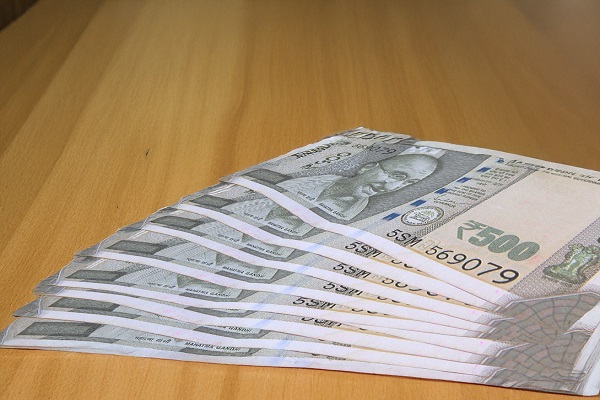




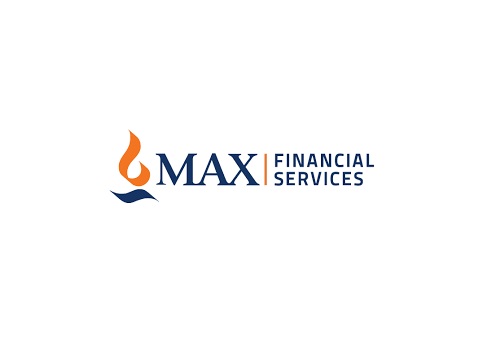
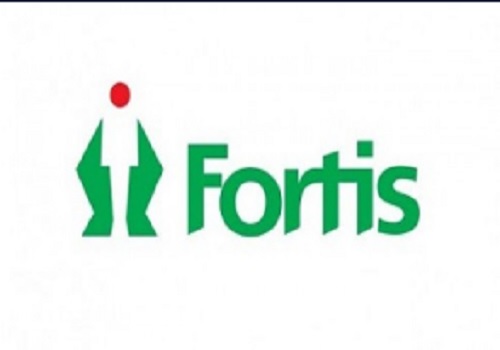


More News

Perspective by Ms. Riya Singh - Research Analyst, Commodities and Currency , Emkay Global Fi...






